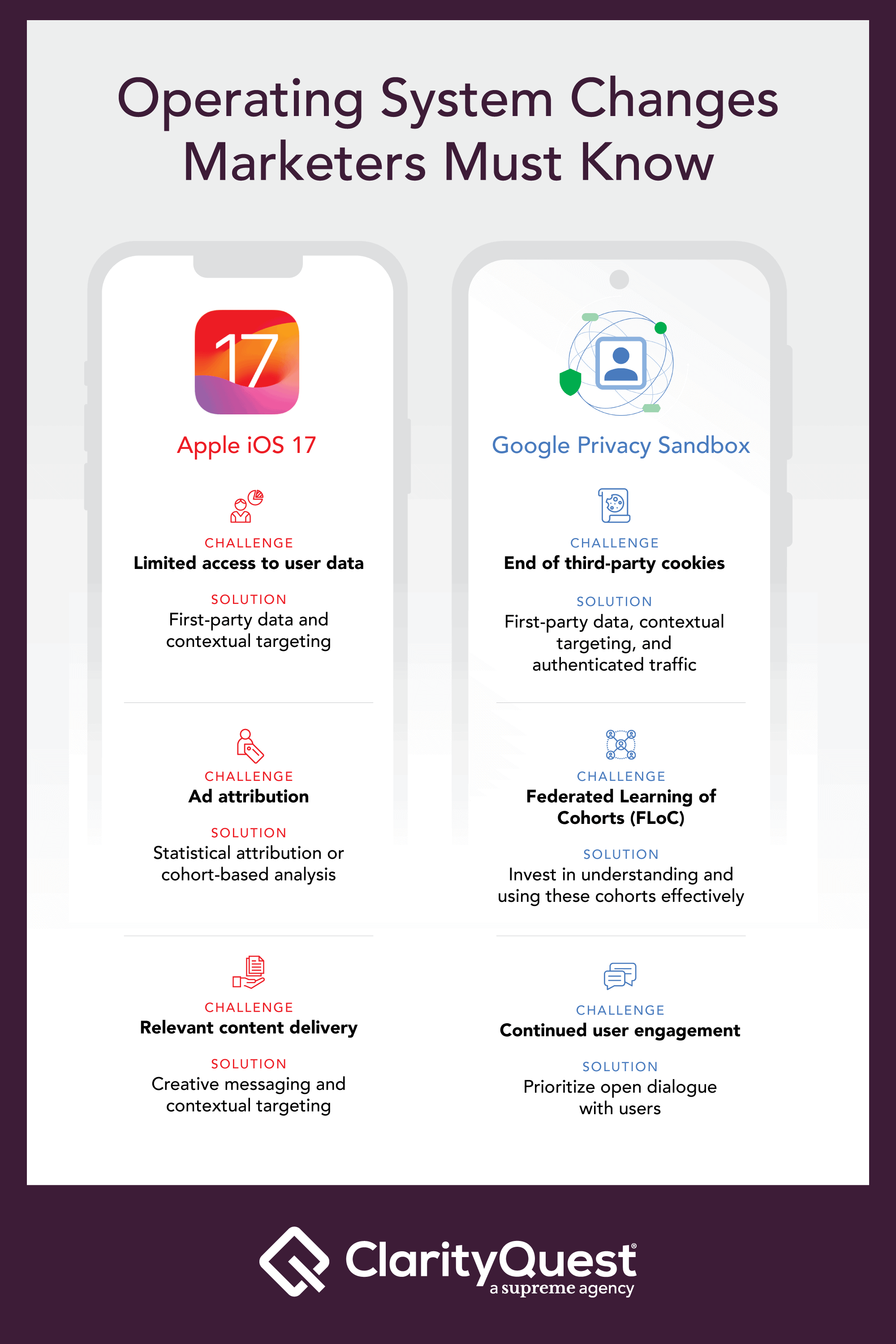In the ever-evolving landscape of digital marketing, staying up-to-date with the latest technological advancements is crucial. With the release of iOS 17 and updates to Google’s Privacy Sandbox, marketers must understand the potential impact these changes may have on their strategies and link-tracking capabilities.
These updates are designed to enhance user privacy and data protection, but they also bring new challenges for marketers, especially when it comes to user data access and third-party cookies.
Here are the key changes and their implications for marketers in the iOS 17 and Google Privacy Sandbox era.
iOS 17: A focus on privacy and user control
Apple has long been at the forefront of prioritizing user privacy, and iOS 17 takes it a step further. One of the most significant changes was the introduction of App Tracking Transparency (ATT) in iOS 14.5. The policies ATT introduced are technically enforced with iOS 17. This feature requires apps to obtain user consent explicitly before tracking their data across apps and websites owned by other companies. As a result, marketers will face challenges in obtaining granular user data for targeting and personalization.
Specifically, Apple’s Link Protection will remove tracking parameters from all links to prevent individual tracking at the user level.
Implications for marketers:
- Limited access to user data: With iOS 17, marketers may experience a decline in the availability of user data due to the opt-in nature of tracking. This may limit their ability to create highly targeted and personalized campaigns. Marketers need to focus on alternative methods for data collection, such as first-party data and contextual targeting.
- Rethinking ad attribution: Marketers heavily rely on ad attribution to measure campaign effectiveness. However, with limited access to cross-app tracking data, measuring conversions accurately becomes more challenging. Marketers should explore new attribution models, such as statistical attribution or cohort-based analysis, to gain insights into their campaign performance.
- Enhanced creative and contextual targeting: As the collection of user data becomes more restricted, marketers will need to rely on creative messaging and contextual targeting to deliver relevant content. Engaging and personalized creatives will be crucial to capture user attention without relying heavily on user-specific data.
Google Privacy Sandbox: Reinventing user privacy in advertising
Google’s Privacy Sandbox is an initiative aimed at creating a more privacy-centric web ecosystem while preserving the value of targeted advertising. It introduces new technologies to replace third-party cookies and provides more transparency and control to users over their data.
Implications for marketers:
- The end of third-party cookies: Google’s Privacy Sandbox plans to phase out third-party cookies, which have long been the backbone of targeted advertising. Marketers will need to adapt by exploring alternatives such as first-party data, contextual targeting, and authenticated traffic to deliver personalized experiences.
- Federated learning of cohorts (FLoC): FLoC is a privacy-preserving advertising technology that groups users with similar interests into cohorts, allowing marketers to target broad audience segments rather than individuals. Marketers should invest in understanding and utilizing these cohorts effectively to maintain effective targeting while respecting user privacy.
- Open dialogue with users: With increased transparency and control over data, marketers should prioritize open dialogue with users. Educating users about the value of personalized advertising and obtaining explicit consent can help maintain trust and foster a positive relationship with the audience.
Prepare for a new era of privacy and data protection
The iOS 17 and Google Privacy Sandbox updates mark a significant shift towards user privacy and data protection in the digital marketing landscape. While these changes present challenges for marketers, they also provide an opportunity to innovate and explore alternative strategies.
With a keen focus on first-party data, contextual targeting, and engaging creatives, marketers can deliver personalized experiences while respecting user privacy preferences. Embracing new attribution models and adapting to privacy-centric technologies like FLoC will be crucial for marketers to navigate this evolving landscape successfully.
Now is the time for marketers to build trust with their audience, foster transparency, and create meaningful connections that drive business results in the iOS 17 and Google Privacy Sandbox era.
If you need time or help making sense of the changing digital marketing landscape, our healthcare tech marketing agency can help.



